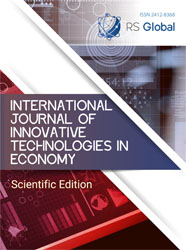EMPIRICAL ANALYSIS OF IMPACTS ON CHINA AND MONGOLIAN TRANSPORT SERVICE TRADE OF INTERNATIONAL COMPETITIVENESS
Abstract
This paper aims to make an empirical analysis of the impact of international competitiveness on China and Mongolia's transportation service trade. First, calculating the RCA competitiveness index, China, Mongolia and some developed countries are compared and analyzed, and then an empirical analysis of the main factors influencing China and Mongolia transportation service trade is conducted, and it is concluded that the port freight export volume increased by 1%, China-Mongolia port freight export volume increased by 0.798%. When the opening of the transportation service industry in China and Mongolia increased by 1%, the export value of the transportation service trade increased by 1.232%. Therefore, the port exports of the two countries have a positive impact on the international competitiveness of the transportation service trade and the opening degree of the transportation service industry in China and Mongolia.
References
Bank of Mongolia. “Current Situation and Challenges of Mongolian Foreign Trade Transportation Logistics” [J]. Bank of Mongolia, Securities Department, 2012, 10-12
Mongolian Post Co., Ltd., “Development of Mongolian Transportation and Logistics Industry” [J]. Mongolian Post Co., Ltd., 2018, 90-93
A. Munkhbold. “The role of transportation logistics facilitation in promoting trade and transportation, status quo and future measures” [J]. Logistics Association 2012,6-10
Ministry of Foreign Affairs, International Research Center for Landlocked Developing Countries, lecture on “Maritime Law and Landlocked Developing Countries” [J]. 2014, 1-8
The Government of Mongolia, “Points of Mongolia's Medium-Term Sustainable Development Policy” [J]. National Development Agency, 2018, 44-45
Mongolian Government, “Research on the Factors Influencing Mongolia's Economic Growth”, 109-115
Views:
668
Downloads:
552
Copyright (c) 2020 Mavidkhaan Baasandulam

This work is licensed under a Creative Commons Attribution 4.0 International License.
All articles are published in open-access and licensed under a Creative Commons Attribution 4.0 International License (CC BY 4.0). Hence, authors retain copyright to the content of the articles.
CC BY 4.0 License allows content to be copied, adapted, displayed, distributed, re-published or otherwise re-used for any purpose including for adaptation and commercial use provided the content is attributed.











